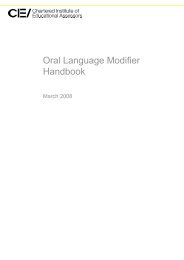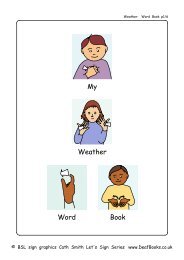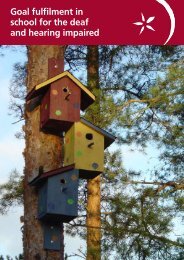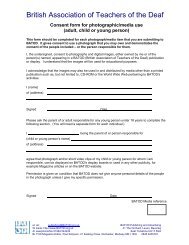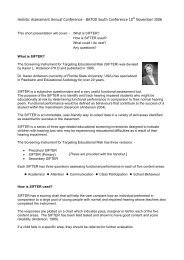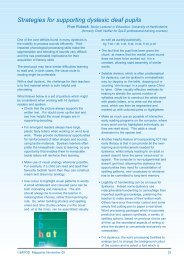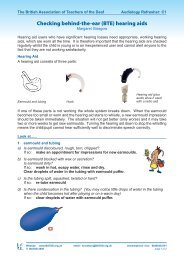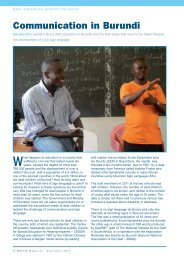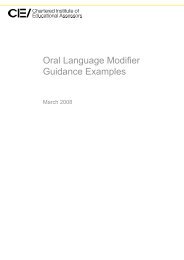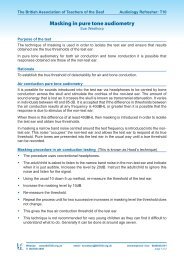Visual reinforcement audiometry - batod
Visual reinforcement audiometry - batod
Visual reinforcement audiometry - batod
You also want an ePaper? Increase the reach of your titles
YUMPU automatically turns print PDFs into web optimized ePapers that Google loves.
The British Association of Teachers of the Deaf<br />
Audiology Refresher: T11<br />
<br />
<br />
<br />
<br />
<br />
<br />
The sound and visual reward (usually a flashing light or a moving puppet) are presented<br />
at the same time and the child is shown where to look for the reward. The sound stimulus<br />
is presented at an intensity level and frequency where it is thought the child may be able<br />
to respond.<br />
This conditioning is repeated until the child is able to anticipate the visual reward and look<br />
as soon as the sound is presented.<br />
When the child is regularly anticipating the reward the sound only is introduced and the<br />
visual reward is given after a definite head turn.<br />
Fairly long gaps in the presentation of sounds are required, otherwise the child will keep<br />
checking and it will be difficult to be sure of the response.<br />
There is no rigid protocol for presenting stimuli. The most useful information is gathered<br />
before the child tires. Minimum responses are recorded at 1khz, 4 khz, and 500 khz to<br />
gain information across the frequency range.<br />
Thresholds below normal limits are not usually investigated.<br />
In the majority of cases two appropriately trained testers are needed:<br />
Tester 1 operates the audiometer and gives the visual reward.<br />
Tester 2 is with the child and helps to manage his/her behaviour. This is a low key activity<br />
which keeps the child facing forward. S/he gives encouragement during conditioning and is<br />
responsible for deciding when /if a different toy needs to be introduced. It is not always<br />
necessary for this tester to manage the child’s attention after conditioning as some children<br />
sit quite happily with a toy and respond to the sounds appropriately. A young child can often<br />
be managed effectively by the parent/carer with instructions from the tester.<br />
It is possible to use only one loudspeaker located at 45, 60 or 90 degrees azimuth.<br />
VRA and Bone Conduction<br />
This behavioural test is also used to gain information about bone conduction thresholds using a conventional<br />
bone conduction vibrator and headband.<br />
VRA with Insert Earphones<br />
Small earphones can be inserted into the ears which enable sound stimuli to be presented at<br />
the tympanic membrane. Thresholds of detectability at specific frequencies can be measured<br />
in each ear. Sounds are normally warble tones or pure tones.<br />
This method enables babies as young as 6 to 7 months to give results that can be plotted as<br />
a bilateral audiogram and is essential for hearing aid fitting and audiological management.<br />
Loudspeakers and visual reward<br />
Website: www.BATOD.org.uk email: secretary@BATOD.org.uk Answerphone / fax: 08456435181<br />
© BATOD 2009 page 2 of 2



